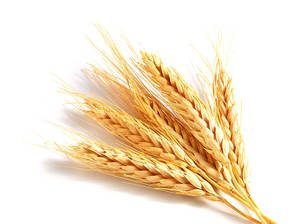Following up on Chapman’s coverage of the current outbreak of E. coli O26 in flour that has sickened at least 17 people, researchers have concluded that little information is available regarding microbial pathogens in wheat and wheat flour. Information about microbial pathogens in wheat is needed to develop effective methods to prevent foodborne illnesses caused by wheat products.
 From 2012 to 2014, we conducted a baseline study to determine the prevalence and levels of pathogens in wheat samples taken before milling. A total of 5,176 wheat samples were tested for enterohemorrhagic Escherichia coli (EHEC), Salmonella spp., Listeria spp., and L. monocytogenes. Positive samples were assayed for most probable numbers (MPNs), and isolates were fingerprinted by pulsed-field gel electrophoresis (PFGE). The rate of detection of each pathogen tested was as follows: Salmonella was in 1.23% of the samples (average level of 0.110 MPN/g), EHECs occurred in 0.44% of the samples (0.039 MPN/g), and Listeria spp. occurred in 0.08% of samples (0.020 MPN/g), but L. monocytogenes was not detected.
From 2012 to 2014, we conducted a baseline study to determine the prevalence and levels of pathogens in wheat samples taken before milling. A total of 5,176 wheat samples were tested for enterohemorrhagic Escherichia coli (EHEC), Salmonella spp., Listeria spp., and L. monocytogenes. Positive samples were assayed for most probable numbers (MPNs), and isolates were fingerprinted by pulsed-field gel electrophoresis (PFGE). The rate of detection of each pathogen tested was as follows: Salmonella was in 1.23% of the samples (average level of 0.110 MPN/g), EHECs occurred in 0.44% of the samples (0.039 MPN/g), and Listeria spp. occurred in 0.08% of samples (0.020 MPN/g), but L. monocytogenes was not detected.
The PFGE assessment found a high diversity for all organisms. All EHEC PFGE patterns (22 of 22) were unique, and 39 of 47 Salmonella patterns (83%) were unique. These results indicate a diverse background of naturally occurring organisms. These findings suggest that the microbial contamination is coming from diverse sources and provide no evidence in support of a specific pathogen load. Altogether, our surveillance study shows that contamination of wheat with pathogens is clearly evident and poses a foodborne illness risk.
Occurrence and levels of salmonella, enterohemorrhagic Escherichia coli, and listeria in raw wheat
June 2019
Journal of Food Protection vol. 82 no. 6 pp. 1022-1027
Samuel Myoda, Stefanie Gilbreth, Deann Akins-Leventhal, Seana Davidson, and Mansour Samadpour
https://doi.org/10.4315/0362-028X.JFP-18-345
https://jfoodprotection.org/doi/full/10.4315/0362-028X.JFP-18-345
